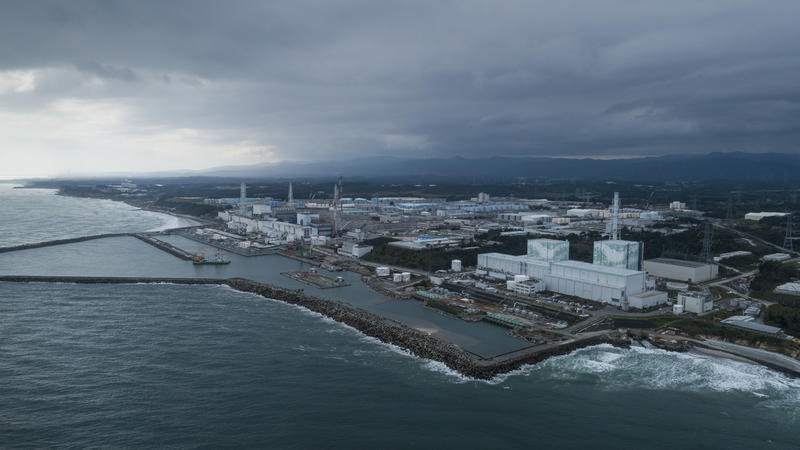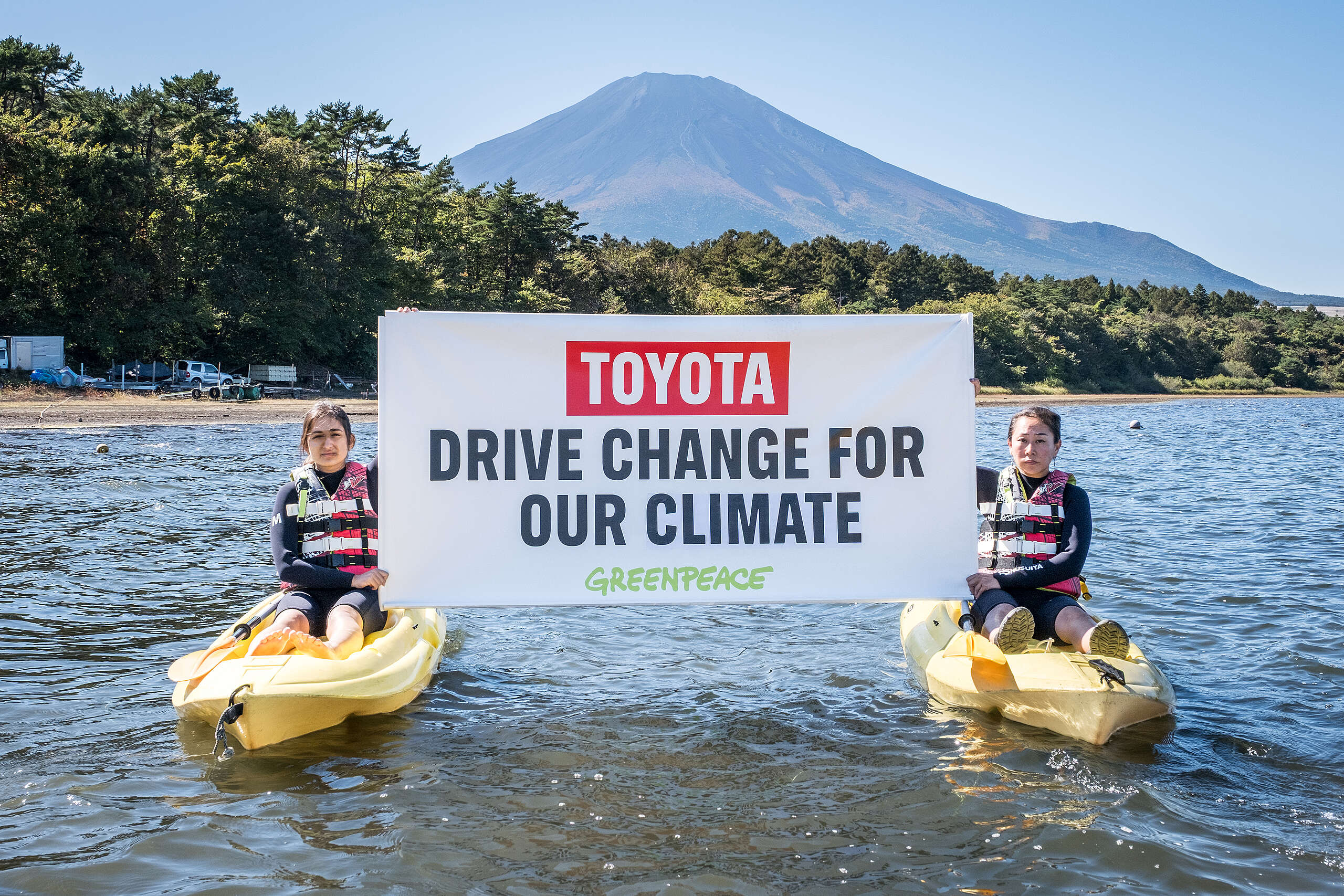The Japanese government has decided to discharge over 1.25 million metric tonnes of radioactive water now stored at the site of Fukushima Daiichi Nuclear Plant into the Pacific Ocean, posing a significant threat to the marine ecosystem and human health. Generally, all nuclear power operation inevitably generates radioactive waste with lasting hazardous effects for up to thousands of years. The decision to release any radioactive waste to the natural environment is irresponsible — and this is one reason among many why Greenpeace has been advocating for nuclear phase-outs worldwide. Here, we will provide some details on this issue from a scientific perspective, to demonstrate why the move to discharge contaminated water in Fukushima is of major concern internationally.
How is Fukushima wastewater distinguished from other nuclear plants?
The contaminated water of Fukushima is distinguished from other nuclear power plants not only by its greater variety of radioactive materials but also the overall much higher radioactivity. If it is discharged to the Pacific Ocean, it will potentially pose a significant threat to the well-being of human health and marine life. Normally, water that is used in cooling a nuclear plant in routine operation and then discharged to the environment has no direct contact with the nuclear reactor fuel cores. In contrast, the contaminated water generated by the Fukushima disaster has come into direct contact with contamination from the melted down cores of three reactors and as such is severely contaminated with many radionuclides. In other words, it is not appropriate to compare nuclear wastewater of normally operating nuclear plants in general and the Fukushima Daiichi nuclear wastewater. According to the latest report by the Japanese government, there are 621 radioactive isotopes were found in the existing nuclear water tanks in Fukushima, among which concentration of a radiouchile called tritium reached about 860 TBq2 – an alarming level that far exceeds the acceptable norm. Based on its survey studies, Greenpeace now highlights the findings of the following detrimental materials.
Strontium-90
An enormous amount of strontium-90 remains in the Fukushima nuclear plant, a radioactive material which in general is found in trace amounts in water discharged to the environment from normal operating nuclear plants.
Strontium-90 is one of the most hazardous radionuclides. Behaving like calcium, it is absorbed by human bodies readily and deposited in bones, resulting in a higher risk of leukaemia or blood cancer. According to publicly available documentation by Tokyo Electric Power Company, the levels of strontium-90 were over 100 times, and part of it over 20,000 times, the regulatory standards in 65,000 tonnes of the treated water through the Advanced Liquid Processing System (ALPS) systems at the Fukushima Daiichi Nuclear power site. A survey study published in the Scientific Report 2017 disclosed that human contact with strontium-90 could result in DNA double-strand breaks. This could lead to significant genetic damage and trigger cancers. Highly soluble in water and with half life of 29 years (the time required for an amount of radiation to reduce to half of its original value), strontium-90 remains radioactive in the environment, gradually gets into our food chain, enters our bodies and can cause irreversible harm to our health.
Carbon-14
The Fukushima wastewater contains carbon-14 with half life of 5,730 years.
Carbon-14 is readily incorporated into protein, nucleic acid, in particular cell components like DNA, leading to their damage, thereby cell death and genetic mutations of living matters across generations.
Other radioactive materials — Cesium-137, Iodine-129, Cobalt-60
What is also present in the Fukushima wastewater include other radioactive materials: cesium-137, iodine-129, and cobalt-60, etc.
The occasion we ingest these radioactive materials is mainly through consuming contaminated seafood. These radioactive materials would accumulate in the marine food chain for long periods, potentially seriously damaging biological cells and even their survival for over thousands of years. The related contamination can return to the human community through the food chain, bringing forward potential health risks to the land.

Contaminated water in Fukushima already purified?
The Japanese government claimed the wastewater treated through the ALPS processing technology would be free of any radionuclides except tritium, which is the only radionuclide to be discharged into the Ocean. However, it is far from true. Until March 2020, the contaminated wastewater generated since the Fukushima incident has reached over 1 million metric tonnes, among it 778,000 tonnes3 (about 72% of the total water in storage tanks) is yet to undergo secondary ALPS processing. There is no clear schedule nor work progress review as to when secondary processing could proceed. Up till now (April 2021), 2,000 tonnes of contaminated water has been undergoing secondary ALPS processing, only 0.25% of the total amount in the coming few years.
Besides, radionuclides stored by each contaminated water tank of the Fukushima nuclear reactors are different. Isn’t it too early for the Japanese government to conclude that the ALPS processing could lower the concentration of radionuclides like Iodine-129 and tritium-90 to its targeted levels of decontamination when it has yet to proceed to the secondary treatment? Whether secondary processing could be completed in years to come is still an issue to be addressed. Even if it is completed, the Japanese government shall disclose the radiation levels of the treated water transparently through independent verification, to ensure concentrations of dangerous radionuclides truly reach Non-Detectable levels.
Greenpeace’s statement on nuclear energy
Greenpeace has been concerned about the safety issues neighbouring nuclear plants posed to Hong Kong, and the Fukushima nuclear disaster. The Chernobyl disaster in the former Soviet Union is a living example of the long-lasting detriments of nuclear crises, from which we could tell the lasting hazardous consequences of the Fukushima disaster. Before the prefecture is free of radioactive risks, manual crises have already taken place: for example, the Japanese government’s lift of evacuation orders in areas still high in radioactive levels and its reduction or even cancellation in living allowance given out to the evacuees. There is a compelling need for international concerns and support to the Fukushima evacuees, for the protection of their human rights and their fight against any blatantly unjust policies imposed on them.
We, therefore, would strive to keep on our field radiation survey in the Fukushima prefecture even in the turbulent times and to monitor its safety conditions scientifically. After detailed examination of the evidence, we have concluded that the most acceptable solution is to continue long-term storage and processing of the contaminated water at its original site, rather than releasing it to the environment. We, therefore, urge the Japanese government to reverse its plan to discharge the contaminated water, and right the wrongs in no time. Greenpeace hereby iterates our global nuclear abolition initiatives, and our advocacy of decommissioning nuclear facilities over the world no sooner, to safeguard human health and well-being of the common natural environment.

2 According to the latest TEPCO’s document released on 27 Apr 2021, the estimated total tritium content of the tank water is lower at 760TBq.
3 According to the latest TEPCO’s document released on 27 Apr 2021, the amount of water required to be processed in the secondary ALPS is revised upward to 832,900 tonnes3 as of 31 December 2020.



